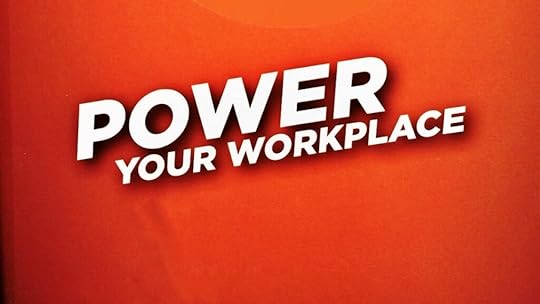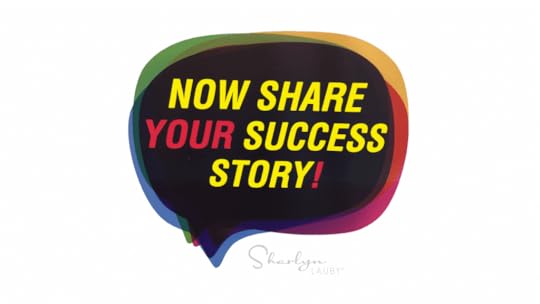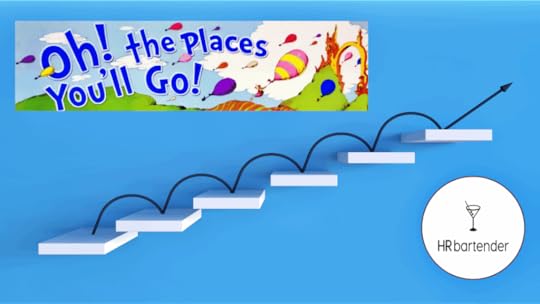Sharlyn J. Lauby's Blog, page 5
July 31, 2025
Bookmark This! The Productivity Edition

Estimated reading time: 4 minutes
Years ago, I worked for an organization that measured productivity by location. Every month, a productivity report was distributed with each location listed in order of how productive they were.
There was a line on the productivity report to indicate what was considered acceptable. The executive who championed this effort was so fanatical passionate about it that the line was named after them. Let’s say their name was Smith. When the report came out, the executive team at our location would immediately look to see if we were above or below the “Smith line” because there were consequences if you were on the lower end of the list. True story!
I wanted to share this story because productivity is important. Organizations want to be productive. They want their employees to be productive. We recently did a series of articles on productivity inspired by a post I saw from the Facebook account BooksForAspirants. Here’s a roundup of those articles for easy reading.
Stay Focused Using the Pomodoro Technique
The Pomodoro Technique is a time management method developed by Francesco Cirillo in the late 1980s. The idea behind the technique is to use a timer (typically 25 minutes) to break work into intervals. Fun factoid: each interval is known as a pomodoro, from the Italian word for tomato, after the tomato shaped kitchen timer Cirillo used as a student (also true story!). I can see the Pomodoro Technique being very useful when you need to focus on a specific task. Especially an intense one.
The 3/3/3 Method Keeps You on Schedule
The 3/3/3 Method could be helpful when you’re trying to work on multiple tasks. Here’s how to use it: 1) Spend 3 hours on your most important task. 2) Complete 3 shorter tasks that are important but maybe you’ve been avoiding. 3) End with 3 maintenance tasks. These are things that need to be regularly done.
I can see the advantage of the 3/3/3 Method being that it creates structure to your workday. In the morning, spend 3 hours working on your most important task. Then in the afternoon, do the shorter tasks and the maintenance tasks. Another big advantage of this method is that it keeps us from falling behind on maintenance tasks.
The Eisenhower Matrix Can Help Prioritize Tasks
The Eisenhower Matrix is named after Dwight D. Eisenhower, the 34th President of the United States. The matrix has two axes: urgent/important and four quadrants: do, plan, delegate, and delete. This is where it becomes helpful to remember what urgent and important mean. Urgent means requiring immediate action or attention. Important means of great significance or value. The matrix assigns an action based on whether a task is urgent and/or important.
You might have heard this quote from Mark Twain before, “If it’s your job to eat a frog, it’s best to do it first thing in the morning. And if it’s your job to eat two frogs, it’s best to eat the biggest one first.” The “frog” in this quote isn’t an amphibian. It represents a hard task. So, if you have a hard task to do, it’s best to work on it first thing in the morning. And if you have two hard tasks, do the biggest one first.
Break Big Tasks into Small Parts
Years ago, comedian Jerry Seinfeld shared a strategy for getting better at something, which has since been named “The Seinfeld Strategy”. The strategy is simple: do it every day. For example, if you want to be a better writer, then write every day. Whether you feel like it or not. It doesn’t have to be good. You don’t need to show anyone. Just write.
Seinfeld went on to say that he keeps a big calendar in his office and when he completes the task, he marks it off with a big “X” on his calendar. There’s something very satisfying (and motivating) about seeing all of those completed “X” marks.
Time Blocking Helps with Schedule Management
Time blocking is pretty straightforward, identify the things that need to get done and put them on your calendar. I like to think of it as making an appointment with myself to get something done. You can time block on a digital calendar or a paper planner. Doesn’t matter. The important thing is that you’ve identified something that needs to be done, and you’ve blocked off the time to do it.
The goal of today’s Bookmark This! article isn’t to suggest selecting one method and use it exclusively. It’s to understand that there are many different strategies for being productive. Find the ones that works for you. It’s very possible that the best method will be based on the type of work you’re doing at the time.
Productivity is going to continue to be important. That’s not going to change.
Image captured by Sharlyn Lauby while exploring the streets of Washington, DC
The post Bookmark This! The Productivity Edition appeared first on hr bartender.
July 29, 2025
What Organizations Need to Know About E-Verify

Estimated reading time: 5 minutes
(Editor’s Note: Today’s article is brought to you by our friends at Poster Guard® Compliance Protection Service, a division of HRdirect , and the leading labor law poster service that gets your business up to date with all required federal, state, and local labor law postings, and then keeps it that way — for an entire year. Enjoy the article!)
All U.S. employers are required to complete Form I-9 whenever they hire someone under the Immigration Reform and Control Act (IRCA). Basically, Form I-9 verifies two things:
The new hire’s identity. Meaning the person is who they say they are. And,The new hire is eligible to work in the United States.You might remember that back in 2023, a new Form I-9 was released. Well, guess what? The U.S. Citizenship and Immigration Service (USCIS) released another new version this year. Employers will want to check the expiration dates on their forms to ensure compliance and put a plan in place to transition to the new version.
Now some of you might be looking at the title of today’s article and asking yourself, “What does the Form I-9 have to do with E-Verify?” Well, E-Verify is an internet-based system that compares the information on an employee’s Form I-9 with records available to the U.S. Department of Homeland Security (DHS) and the Social Security Administration (SSA).
While using E-Verify is voluntary for most businesses, organizations with government contracts might discover that E-Verify is a contract requirement. In addition, some states are passing legislation requiring organizations to use E-Verify. For instance, my state (Florida) passed a law requiring private employers with at least 25 employees to use E-Verify. This might not matter if you don’t have employees in Florida, but in doing some research I discovered that 27 states have some sort of E-Verify requirement.
In addition, there’s a new Illinois law that requires employers who use E-Verify to display a poster indicating such in addition to their other required posters. So, with the change in Form I-9, coupled with state legislations requiring E-Verify, this could be a perfect time for organizations to look at their processes.
For employers not currently using E-Verify:Given the update to Form I-9, this could be a good time to consider adding it to your process. There are two good business reasons for adding E-Verify to your existing process: compliance and administration.
Compliance. E-Verify helps employers reduce the risk of hiring individuals who are not authorized to work in the U.S. through the employment eligibility check. It includes a photo matching option that allows employers to compare the photo provided by the individual when certain documents (i.e., from List A such as a resident card or passport) are presented for verification. This allows employers to establish a rebuttable presumption that they have a system in place to prevent hiring individuals who are unauthorized to work.
Administration. E-Verify allows employers to utilize Form I-9 software and eliminate manual data entry – saving time, money, and potentially reducing data errors. This also provides organizations with the ability to monitor document expiration dates to ensure compliance. This electronic system would make it easier to store and maintain documentation. And should the organization ever find themselves in an audit situation, they would be able to respond in an effectively and efficiently.
For employers currently using E-Verify:First and foremost, make sure that you’re in compliance. This includes labor law posting requirements. Organizations that use E-Verify are required to provide job applicants with access to the latest E-Verify and Right to Work posters. In addition to applicants and candidates, employees must be able to see the postings as well. These postings must be displayed in both English and Spanish in a prominent location that is clearly visible to prospective employees and all employees, including those hired to work remotely who will have their employment eligibility confirmed with E-Verify.

If you’re not sure if your postings are current OR you would like an easier way of managing your postings, our friends at Poster Guard offer two posting services related to E-Verify and Right to Work.
The E-Verify Poster Service provides the posters that every employer participating in the E-Verify program must display. There’s also an add-on E-Verify Posting Service for online job applicants, since they must be able to see these postings.It’s an electronic service that, for 12 months, is updated in real-time as regulations are changed. And it’s bilingual (English and Spanish). Like all of Poster Guard’s services, it comes with a 100% guarantee that the posters are compliant.
Regardless of whether you’re currently using E-Verify, there are times when labor law changes should prompt us to look at the entire process and not just one step. I think this is one of those moments.
The change to Form I-9 is an opportunity to make sure that the organization is in compliance with both Form I-9 and E-Verify. Organizations can confirm they have the most current forms and the required postings. And if there are opportunities to partner with a company like Poster Guard, this shifts the organization’s compliance strategy from being reactive to proactive.
If the organization hasn’t adopted E-Verify, now is the time to have a conversation. Services like E-Verify are designed to protect employers and employees. Employees know that the organization is following the law by hiring individuals who are authorized to work. And employers know that they’re hiring someone who is authorized to work.
The post What Organizations Need to Know About E-Verify appeared first on hr bartender.
July 27, 2025
6 Steps to Address Workplace Skills Gaps

Estimated reading time: 4 minutes
The business world is constantly changing, and organizations need to change with it. This isn’t new. One of the things that often happens when organizations change their strategies is they recognize skills gaps. For example, an organization looking to increase their use of artificial intelligence (AI) tools might find that employees don’t have all the perquisite skills to work with AI. And that’s just one example.
Ideally, organizations should not wait until they are faced with a skills gap before they address it. Many organizations are getting ready for what I call “budget season” where they review their strategic and operational plans, put budgets in place, and talk about plans and needs for the future. This is a perfect time to also review and update the organization’s workforce plan.
Here are the six steps to consider when reviewing and updating the organization’s workforce plan:
Understand the organization and its strategies. It might be tempting to skip this step and say, “I’ve been working here for XX years. I know the company strategy.” But with all the change that’s going on around us, it can be beneficial to do a quick but thorough review. It doesn’t have to be long or elaborate, but make sure that everyone is on the same page regarding the organization’s priorities. It will be very helpful in the next step. Identify the knowledge, skills, and abilities necessary to achieve goals. Once the company’s priorities have been identified, now spend some time thinking about the knowledge, skills, and abilities (KSAs) required to achieve the associated goals. KSAs are often used interchangeably but they’re not the same. For example, an employee might be able to explain the ADDIE model for instructional design (knowledge) but have no experience using it (skill). Conduct a gap analysis. In this step, the organization should conduct a traditional gap analysis comparing where they are now to where they want to be in the future (Step #2 above). In some cases, there might not be a gap – and that’s great. In other cases, there could be a significant gap that needs to be addressed. Create a plan to address the gaps. After identifying the skills gaps, the organization can prioritize what they want to work on and put a plan in place to address it. A great tool for project planning is using a SMART matrix. Depending on the gaps identified, they might not be able to do everything at once. That’s okay. It could also make good business sense to address skills gaps in a particular order, so employees are building skills over time. Implement the plan(s). There are many ways to address skills gaps, including training sessions, special assignments, on-the-job activities, and more. Organizations will want to look at the resources they have available to help with skill development. It’s also possible they will need to budget resources to address other skill development areas. Evaluate and measure results. Adjust as necessary. As the organization is working on closing skills gaps, they should look at their results. This could help with future skill building activities. Maybe some methods work better than others. Maybe the company wants to reprioritize activities. The results will help with future efforts.Organizations should not view skills gaps as a failing on their part … or their employees. New methods and technologies are being developed all the time. On some level, skills gaps should be expected. Which is why organizations need to conduct a regular review of the KSAs needed for success and put a plan in place to maintain employee skill development.
Image captured by Sharlyn Lauby while exploring the streets of Philadelphia, PA
The post 6 Steps to Address Workplace Skills Gaps appeared first on hr bartender.
July 24, 2025
Leaders: How to Let Your Team Know That You Hear Their Ideas

Estimated reading time: 4 minutes
I want to start today’s article with a story. Many years ago, I worked for an organization that required professional business attire. Every day. No exceptions. I thought it was a bit antiquated. What you wear doesn’t determine how good you are as a manager and leader. So, I pitched the idea to my boss to let us wear business casual attire. She said “no”.
Interestingly, a few months later, she came to me about the idea. Said that she thought the timing was good to pitch it to senior leadership and wanted my input. The result? Casual Fridays. Which eventually became casual every day.
The reason I wanted to share this story is because sometimes employees might feel frustrated because they don’t feel anyone is listening. I know I felt that way when my boss initially turned down my idea. But looking back, she did listen. What I’ve learned over time is that listening and saying “yes” are two different things.
As leaders and managers in our organizations, we need to make sure that our teams know we’re listening to them. Even when the answer is going to be “no” or “not right now”.
We’ve talked before about using listening styles to become a better listener. When we want to present an idea, we’ll want to think about how someone likes to communicate. Not only does this apply to the person presenting the idea, but also to the manager or leader who is being asked to comment on the idea.
It could also make sense to create some sort of idea parking lot. You know, in meetings when someone brings something up that’s not on the agenda, we move it to the “parking lot” so it can be added to an upcoming meeting agenda and discussed properly. Maybe we can create an idea parking lot where ideas go and are revisited later. The thought being if they’re still exciting after some time and a little vetting, then they might be worth testing out.
Another way to help employees feel that their ideas are being heard, is to have the team discuss them. It’s possible that the team might take a draft of an idea and turn it into something fantastic. Give a couple of team members the task of researching options and coming back to the group with details. This option can also be helpful if the team is generating lots of ideas. It is possible that there are ideas that conflict with each other and this process would allow the team to sort that out. Who knows … maybe a couple of ideas that initially compete with each other can be merged together to form something great.
Bringing the team into the research and decision-making process can be valuable for several reasons. First, it helps the team understand what’s involved in getting an idea approved and implemented. Next, it encourages team communication, problem-solving, decision making, and consensus building. Finally, it allows the team to feel like they have a direct impact, which can increase engagement.
It can also increase the total number of ideas that the organization gets. Which is a good thing. If employees see that ideas are being approved and implemented, that could encourage others to start sharing their thoughts as well. Those employees who are quick to say, “Oh, they’ll never listen to me.” might change their mind.
Employees are smart. They have great ideas. Organizations should want to hear them. That means managers and leaders need to listen. And let employees know that they’re listening.
Image captured by Sharlyn Lauby while exploring the streets of San Antonio, TX
The post Leaders: How to Let Your Team Know That You Hear Their Ideas appeared first on hr bartender.
July 22, 2025
It’s Totally Acceptable to Accidentally Find Your Dream Career

Estimated reading time: 4 minutes
A person on LinkedIn was recently talking about intentionally studying to become an HR professional versus “accidentally” ending up in HR. You know what I mean, someone who studies for a different career but ends up working in an HR role. Unfortunately, this person tried to make it sound like accidental HR isn’t as good as intentional HR.
I don’t want to take anything away from individuals who have known their whole lives that they wanted to be a human resources professional and went to school to study HR. That’s great. It’s equally great when someone accidentally finds HR as the career of their dreams.
Maybe I’m taking this conversation a bit personally since I’m one of those accidental HR professionals. My college degree isn’t in human resources. HR wasn’t even on my radar as a career choice. I got into human resources after being in a car accident. My injuries prevented me from doing my job, so my employer looked at my education and work experience and asked if I’d like to give HR a try. They also paid for me to attend training programs and encouraged me to become a part of the HR community.
For me, that encouragement to “give HR a try” led to a VPHR corporate career and then president of my own HR firm. I’m grateful for the people and organizations I’ve worked with. And the opportunities I’ve had like travel, professional development, oh! and I can’t forget HR Bartender which has opened doors for me as well. I’ve been invited to speak at conferences, written four HR books, and hosted a podcast. I’ve had a very fortunate HR career that started by accident – and I mean that both literally and figuratively.
I want to believe that it’s okay to accidentally find HR and then learn the theories, etc. In fact, this could be true for many other professions. Not every job can be approached this way. Obviously, we can’t fly a plane then go get a pilot’s license. But there are careers where we can get the job and learn the job at the same time.
Hopefully, that’s the point. When you find a career you like, it’s essential to get the requisite education. This applies throughout your career. HR twenty years ago isn’t HR today. Frankly, HR five years ago isn’t HR today. We need to keep learning so we can stay relevant. And we should want to because we enjoy the work we do. The good news is that career development offers so many options.
READ the latest books, blogs, articles, etc. There are classic business books that everyone should read as well as new titles. Let me suggest that you don’t have to agree with every word. (Like I did with the person’s comment on LinkedIn.) Use books to gain context and develop an opinion about issues related to your chosen profession.
LISTEN to webinars, podcasts, and educational sessions. There are lots of free sessions that you can attend to hear more about what’s available in the business world. Again, you don’t have to agree with everything. I find it to be helpful to hear other voices and ideas. It might spark something that I hadn’t really been paying attention to, but I should.
CONNECT with other people in your profession. You can do this both online and in-person. There are HR related professional associations as well as casual groups. Find what works best for you. Keep in mind that it could make sense to belong to more than one. I like having a nice blend of local groups as well as global groups to maintain perspective.
Finding your dream career is tough. Personally, I don’t think it’s necessary to add the pressure of saying that you can’t accidentally find the job you’ve always wanted. Regardless of how you land your dream career, be ready to learn all along the way. It will keep your skills relevant and help maintain your interest in the field you love.
Image captured by Sharlyn Lauby while exploring Disneyland in Anaheim, CA
The post It’s Totally Acceptable to Accidentally Find Your Dream Career appeared first on hr bartender.
July 20, 2025
Bridging the Artificial Intelligence Knowledge Gap

Estimated reading time: 4 minutes
I always feel this is an interesting time of the year for organizations because many of us are thinking about next year from a goals and budget perspective. Where does the organization think they will end up in 2025? Is it too early to tell? And what does that mean for 2026? It’s not a quick or easy discussion, even when things are going well.
One of the conversations I could see organizations dedicating a lot of time to is artificial intelligence (AI). I saw a discussion recently on LinkedIn about the biggest knowledge gap learning and development (L&D) professionals face regarding AI. It included some of the things you would expect like developing a strategy, having AI goals, as well as an internal policy. All things we’ve discussed here on HR Bartender. In fact, here are links to some of those articles if you want to check them out.
Artificial Intelligence and Automation: Know the Differences and Similarities
Organizations Should Identify Their Artificial Intelligence Goals
10 Things to Include in Your Artificial Intelligence Policy
How to Find the Right Artificial Intelligence Tool for HR
But back to the conversation about AI and the future. I think there are a couple of things related to learning and artificial intelligence that need to move up on the priority list.
First, business leaders need to realistically understand what AI can do for them. The key word here being realistically. I believe there are leaders who purchase AI tools and then figure they can eliminate a significant portion of their workforce, AI will handle everything, and profits will soar.
Personally, do I believe that AI tools might take over some tasks that are currently being done by humans? Yep, I’m sure it will happen … eventually. But I don’t believe we’re completely there yet. I think it takes time for AI to learn … just like it takes time for people to learn. And AI might make some mistakes while it’s learning … just like people sometimes make mistakes while they’re learning.
So, AI taking over responsibilities is a process that takes time. While that’s happening, the organization’s employees will be especially valuable. Because they will be monitoring what’s going on to ensure tasks are completed correctly, on time, and within the company’s quality standard.
Which leads me to a second point. Organizations need to help employees learn how to use AI and get desired results. It’s called prompt engineering. Basically, it’s knowing how to ask AI good questions, so you get good answers. For example, if you have a device at home that you speak to like Siri or Alexa, you have to learn how to ask it the right questions. If you don’t, you might not get an accurate reply.
I tend to think of AI like a new employee. They have to learn about the organization and vice versa. Which means – going back to the original question about L&D’s biggest challenge regarding AI – it’s getting everyone educated on the best way to orient the organization to this new tool. Employees at every level need to understand what AI is capable of right now and what it will be able to do in the future (after some learning). And everyone needs to know how to effectively interact with AI to get the most from the investment.
Artificial intelligence is exciting. Its capabilities appear to be endless. I can’t wait to see what AI is able to produce. But this also means that I need to learn how to use it correctly, ethically, and responsibly.
Image captured by Sharlyn Lauby while exploring the coast of Miami, FL
The post Bridging the Artificial Intelligence Knowledge Gap appeared first on hr bartender.
July 17, 2025
Bookmark This! The Mentoring Edition

Estimated reading time: 3 minutes
Mentoring is a great activity. Not only does it feel great to share your experience and knowledge with others, but you can also learn a lot along the way. However, that will only happen if the mentoring relationship is built on the right foundation.
The good news is that mentoring is an incredibly popular activity. According to the site MentorCliq, 98% of all U.S. Fortune 500 companies have mentoring programs and 100% of the top 50 U.S. Fortune 500 companies. That’s why it’s worth the time to learn how to do it well … because it works.
Regardless of whether you’re currently participating in a mentoring program, here are a few resources that could be helpful.
Mentors or Coaches – Why You Need Both
Just because today’s article is focused on mentoring doesn’t mean that one is better than another. In fact, it only heightens the importance of choosing the right method. Coaching might be best in situations where there’s a skills or knowledge gap but not a clear path to address it. Mentoring may be a good option when someone is confident about what they want to do but they need direction.
5 Qualities Found in Excellent Mentors
Mentors can come and go throughout our personal and professional lives. If you must pass on a mentoring opportunity, that’s fine. It’s better to say, “now is not a good time” or “I’d love to if we redefine expectations…” than to say “yes” and not get the full benefit – for you or the mentee.
Having a mentor and/or being a mentor is a wonderful thing. The success of the mentoring relationship is based on…having the right relationship. That means asking the right person. For the right reason. Also keep in mind that mentors aren’t necessarily forever. It’s possible that the mentoring relationship might need to take some breaks along the way. That can be a good thing for the relationship and perspective.
Be Your Own Mentor and Make It Work
Years ago, I had the opportunity to hear Tim Gunn, of Project Runway and Making the Cut fame, speak at a conference. His message? Be your own mentor. That’s right. Don’t wait for anyone else to help you. Be tenacious and create your own success. Rely upon you – and not anyone else – to turn your goals into reality. It was an interesting message coming from someone who became famous being a mentor on television. But it reinforces the importance of taking control of our own learning.
There’s one other mentoring-type opportunity that I wanted to share. That’s group mentoring. Think of it like developing a network of people who can learn from each other. We all have unique backgrounds and experiences that we can share. And there’s no rule that say’s mentoring needs to be a one-on-one activity. In fact, maybe group mentoring could provide more accountability.
Mentoring programs can help individuals throughout their careers. You don’t need to wait until to have a goal or something to accomplish to have a mentor. To get started, think about what you’re looking for in a mentor and who you might want to speak with about being a mentor. Plan the conversation. It could take some time.
As we’re entering the latter half of the year, it could be a good time to consider whether getting – or adding – a mentor makes sense for your professional development.
Image captured by Sharlyn Lauby while exploring the streets of Gainesville, FL
The post Bookmark This! The Mentoring Edition appeared first on hr bartender.
July 15, 2025
3 Components of Effective Employee Coaching

Estimated reading time: 3 minutes
Organizations want high performance. It helps them achieve their goals. Becoming a high performing organization starts with having high performing employees. The way to get a higher level of performance from employees is by coaching them.
I think one of the mistakes that organizations make is thinking employee coaching is only for situations when employees aren’t meeting the company’s performance standard. And yes, employees do need to receive coaching in those situations. But that’s not what we’re talking about today.
Workers who are doing good work need employee coaching as well. You could equate this with coaching athletes. Team coaches don’t say, “Hey, you don’t need to be coached. You’re doing fine.” Same applies to employees. Managers should be continuously coaching employees so their performance stays at a high level.
Which brings us to today’s conversation about what it takes to effectively coach employees? Here are three things to consider.
Competent managers. By competent, I mean that managers have been trained on how to have employee coaching conversations. And they understand why having those conversations is important. Frankly, organizations might have to spend time connecting the dots between coaching employees and bottom-line success (which leads to making bonus and other rewards). Setting performance expectations. Some of this happens during interviews, orientation, and onboarding. But once an employee has been with the organization for a while, how do they learn about expectations? For instance, if the company implements a new policy or procedure, how are new expectations communicated? Personalized coaching. I’d like to think this goes without saying but let me say it anyway. Every employee is not the same . Even when we have two good employees … they’re not the same. Their motivations are different so coaching them is going to need to be personalized for each employee. It reminds me of employee rewards. Employees respond to rewards differently so their coaching needs to align with what how they respond best.The good news is that employees want coaching from their managers. According to a report from DDI, over 30% of frontline employees want more coaching than they’re currently getting. There’s a real opportunity for organizations to place an emphasis on employee coaching and develop a culture that encourages it.
An organization’s desire to perform at a high level isn’t going away. It’s always been there. What hasn’t always been there is the coaching element. Now is a great time to bring this conversation to the forefront. If there are managers who do coach, get them to champion the business case. They can share operational stories along with the results.
Yes, employee coaching is hard work. However, managers who do a great job at coaching see the benefits in higher employee engagement, increased productivity, and lower turnover. It’s better to spend time proactively coaching employees than reacting to what happens when you don’t.
Image captured by Sharlyn Lauby while exploring the streets of Savannah, GA
The post 3 Components of Effective Employee Coaching appeared first on hr bartender.
July 13, 2025
Use the ACE Framework to Monitor Performance Management

Estimated reading time: 3 minutes
We’ve been spending a lot of time lately talking about productivity. I believe both organizations and employees want to be productive. That’s not the same as being busy. We can be busy and not productive. So, the question becomes, how do we make sure that our performance is productive, not just busywork?
There’s a performance management framework called ACE (alignment, capabilities, engagement) that organizations can use to make sure their system is accomplishing its goals.
Alignment: Organizations should ask themselves, “Is everyone working toward the same goals?” (i.e., creating alignment). Some people might immediately say, “Well of course they are!” but honestly that might not be the case. There are several reasons for this. Organizations might not make their goals clear to everyone. For example, an employee might think the company’s goal is to deliver excellent customer service. And a manager might think it’s making as a much money as we can. Both are goals, but what are the parameters of those goals? That’s why communicating goals is so important.
Capabilities: Speaking of accomplishing goals, capabilities refers to whether the organization is providing employees at every level with the training, tools, and information they need to accomplish the company’s goals. It’s one thing to say, “Here’s our goal for the year.” and another thing to make sure employees can actually do it. One example what I’m seeing right now is companies saying they want to incorporate more artificial intelligence (AI) into their business processes. That’s great and could very much help productivity and the bottom-line. But have employees been trained on how to work with AI so they can work with it to do the work?
Engagement: The last part of the framework is engagement. Companies can communicate to employees the goal, give them the tools to accomplish the goal, but if employees aren’t engaged … well, it might not happen. You’ve probably seen examples of this. Employees know what they’re supposed to do but because their manager treats them poorly, they don’t do it. Maybe they quit … with no notice. And the organization is left scrambling. The Reddit sub Antiwork is filled with stories of managers treating employees badly. Organizations need to recognize the value that engagement provides. It’s not just some feel good mantra. It has a tangible impact on performance.
One of the things that I like about the ACE framework is that it’s easy to remember. Organizations can regularly do an internal check to see that they’re systems are doing what they were intended to do.
Are our employees in alignment, working toward the same goal?Have we provided employees with the capabilities to get the work done?Are employees engaged with their work and the company?The ACE framework could be used for the organization as a whole or maybe a department. I could see an organization struggling with revenue to ask themselves “Is the sales team aligned, capable, and engaged?”. And if the answer to any of these questions is no, then they need to start researching why.
It might be interesting to ask these questions of a handful of company executives and see what answers emerge. Maybe ask them individually and see if you get consistent responses. If the executive team isn’t on the same page that could be very telling. How could the organization expect employees to be in alignment if the executive team isn’t?
The post Use the ACE Framework to Monitor Performance Management appeared first on hr bartender.
July 10, 2025
Meeting Leaders Don’t Have to Do It All

Estimated reading time: 4 minutes
Meetings are important and we spend a lot of time in them. I’ve mentioned before that there are only three reasons to hold a meeting: 1) convey information, 2) solve problems, and 3) make decisions. When we’re having a meeting, we want people to participate at a high level.
I recently shared with you an article on being a good meeting participant. But for meeting leaders, a piece of feedback they might get is that meetings are boring or not interactive. One of the ways that meeting leaders can add more engagement is by giving meeting participants something to do. For example:
Have someone on the team take minutes. Meeting minutes matter. They’re a record of the meeting and what the group has agreed upon. I like using the SMART format for meeting minutes – specific, measurable, actionable, responsible, and time-bound. Specific refers to the specific goal being agreed upon. Measurement is how the group will measure their success. Actionable are the action steps the group will take. Responsible is who will be responsible for each action step. And time-bound is when each step should be done.
Couple of things to note. If your organization is great at “We should do this …” and not very good at making it happen, the SMART format can be helpful for turning ideas into action. Also, if you have someone who never seems to have any to-do items after a meeting, this approach can be a way to make sure work is distributed fairly. The person taking minutes will be able to show who on the team is doing what. Speaking of who is doing what … this is each employee’s opportunity to try to do something they will like. If you know that you need to volunteer to take on a task … take on the one you want.
One more thing about minutes. The SMART format also helps groups confirm that they can live with the timeline. Sometimes we’re quick to say, “Oh yeah, I can do it.” when the reality is, we can’t. The group can look at their timeline and say, “Leonard has three tasks to complete this month. Is that realistic? Should someone else do one of these tasks?”.
Ask someone to create and monitor the parking lot. The term parking lot is used for those items that come up during the meeting that aren’t on the agenda. Instead of discussing them – and possibly not getting to planned agenda items, the topic is put in the parking lot to be discussed later. Someone on the team can be responsible for identifying topics not on the agenda and putting items on the parking lot so they are remembered and added to the next meeting agenda.
Ask a participant to monitor the time. Unfortunately, my guess is we all know what it feels like to have a meeting run over on time. And in all fairness, sometimes we might be having an in-depth conversation and lose track of time. It doesn’t change the fact that we have other obligations that we need to complete. Having a person speak up occasionally to say, “We’ve been chatting about this for 20 minutes and still have three agenda items to cover. Should we wrap up and continue the conversation next meeting?”.
These are just a few things that meeting leaders can do to create more interaction. And frankly, run a better meeting. The group sets good goals with detailed action steps. They stay focused on the agenda. The meeting ends on time.
Meeting leaders need to remember that there is no rule that says they need to do everything. Ask others to get involved. Before the next meeting, go to a couple of participants and ask, “Would you mind keeping our parking lot at the next meeting?” Participants come to the meeting prepared – for the agenda and their role.
I mentioned at the beginning of this article that meetings are important. Organizations should make it a priority to have good meetings. It will result in better communication, participation, and productivity.
Image captured by Sharlyn Lauby while exploring the streets of Nashville, TN
The post Meeting Leaders Don’t Have to Do It All appeared first on hr bartender.
Sharlyn J. Lauby's Blog
- Sharlyn J. Lauby's profile
- 10 followers



